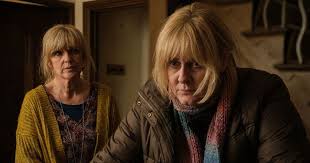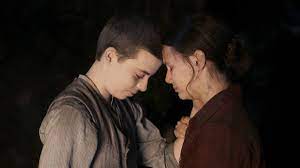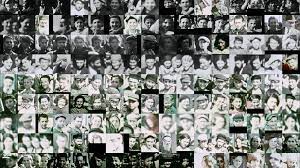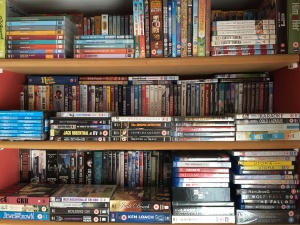
January is probably my least favourite month. It has all the darkness of December without the delights of Christmas to offset it. The weather usually does its worst and we know we are on the way out of the darkest days, but it seems to take forever to notice it. TV was always the go-to distraction in these dark days, but in recent years broadcasters and streaming services seem to have concentrated on presenting all their best stuff at the end of the previous year (probably for awards purposes), leaving the January cupboard comparatively bare. But not this year. For the first time in years, I have found plenty to engage me and already have four things for the 2023 shortlist!

Sunday nights on BBC1 is usually key at this particular moment and this year, with the third season of Happy Valley scheduled, a strong start was pretty much guaranteed. One of the things I look for in a good drama is ambiguity, but it had been somewhat lacking in the central Catherine Cawood (Sarah Lancashire) character in the first two seasons. She was always so impressively in command, the calm and reliable centre of events, taking everybody’s troubles upon her broad shoulders and coming out on top in the trickiest of circumstances. One thing she seemed to have no trace of was self-doubt and that was a clear flaw. This time round she began to realise that maybe she should have trusted others, especially her sister and grandson, rather than trying to protect them by keeping important information to herself, though it took a falling out with them both and the intervention of the ghost of her dead daughter to bring her to this realisation. Maybe, in the end, her implacable hatred of her nemesis, Tommy Lee Royce (James Norton) was also open to question. Not before the end titles, for sure, but maybe something for her to think about as she walked off into her retirement, like a western hero who had won the final showdown and was heading off into the sunset. A fine ending to a very fine series.

Also on BBC1 on Sundays in January (though it had started in December), and also in its third season, was Jack Thorne’s adaptation of Philip Pulman’s His Dark Materials. Throughout, it had been a brilliant and engaging mixture of fantasy adventure and theological/philosophical themes and it continued in that vein to the end. The scenes in the land of the dead were particularly striking; redolent of Gustave Dore’s monochrome illustrations for Dante’s inferno. And the key character in the season was Ruth Wilson’s Mrs Coulter – like Cawood, somebody seemingly in command, though in her case for selfish and occasionally downright evil ends, but who came to a degree of self-realisation and did the right thing in the end. Another satisfying conclusion.

I don’t usually shortlist third seasons but am glad to make an exception for both these two. His Dark Materials built to a great climax and I had been close to shortlisting it twice before. Indeed, I noted in my blog in December 2020 that, given its provenance as a trilogy of novels, it was probably best to leave it to the end to consider shortlisting it, which has now come to pass. In the case of Happy Valley, I would certainly have included season 1 in my top ten of 2014, but the first two seasons had already been transmitted before I started blogging in 2017, so I am delighted to be able to shortlist the third on behalf of the whole.

Something which regularly adds to the air of gloom in January is the sombre programming which marks the period around Holocaust Memorial Day. It can be unfortunately easy to note its presence without engaging too closely with it, and many of the items have been seen before, but this year it contained two outstanding new pieces, both on BBC4; one of them an extensive look at the subject from a new angle by my favourite American documentarians, the other a piece of inspired documentary minimalism – Ken Burns and Lynn Novick’s The US and the Holocaust and Bianca Stigter’s Three Minutes: A Lengthening. The former was pretty much what you would expect from Burns and Novick, though no less impactful for that, and I don’t think I really need to say any more about it other than that it is automatic for the list. But the latter was a revelation.

The three minutes in question is a fragment of home movie, some of it in colour, shot in 1938 by a Jewish émigré to America, returning to his home town in Poland. It shows the Jewish community in that town, eagerly crowding around the camera and going about their daily lives. The full three minutes is shown, silently, at the start of the documentary, and for its remaining 66 minutes, you see nothing but images from those brief shots: enlarged, reversed, slowed down, every section of the frame examined for the minutest clues as to what and whom we are seeing and what the film can tell us. It is constructed like a piece of minimalist music, with constant repetition of the same material in different forms, and the more it is repeated, the more mesmerising it becomes.

It also draws you into the world of those people whose community will be destroyed in the coming years. The forensic nature of the enquiry does not lessen the emotional impact of the piece, given even greater strength by Helena Bonham-Carter’s restrained and questioning narration. For me as a career film archivist, it also spoke to many of my professional interests. The searching for clues in the background of the frames and the imperative to put names to the unidentified faces took me back to my cataloguing days. The presentation of the footage in its correct ratio and speed was also important. Digitisation was clearly vital to the manipulation of the images later in the piece, but there was no attempt to “improve” the quality of the images with the sort of software which can add frames, smooth motion and (worst of all) add colour where there is none, until near the end when a brief section was subjected to digital cleaning and Bonham-Carter asks the viewer if the process gives them any greater empathy with the people in the shot; a key claim of those, like Peter Jackson, who are fond of such manipulation. No answer is given in this film. Maybe some viewers would have said “yes”, but for me the moment begged the answer “no”, though maybe that was my own bias showing through (and I like ambiguity in documentary as well as drama, so it was well judged).
Above all, the documentary illustrates precisely how important film is as a historical record, when properly presented. I can’t think of anything, even in the complete works of Ken Burns, which makes that point more successfully and it is very gratifying to people like me who have devoted their time to ensuring its preservation. The section when all the faces are collated into one mosaic image becomes a permanent audiovisual memorial to those who probably have no gravestone.

So, four shortlisted programmes in the first month (and a bit) is a great start to the year. Maybe I’ll be making some choices at the end of it this time.

